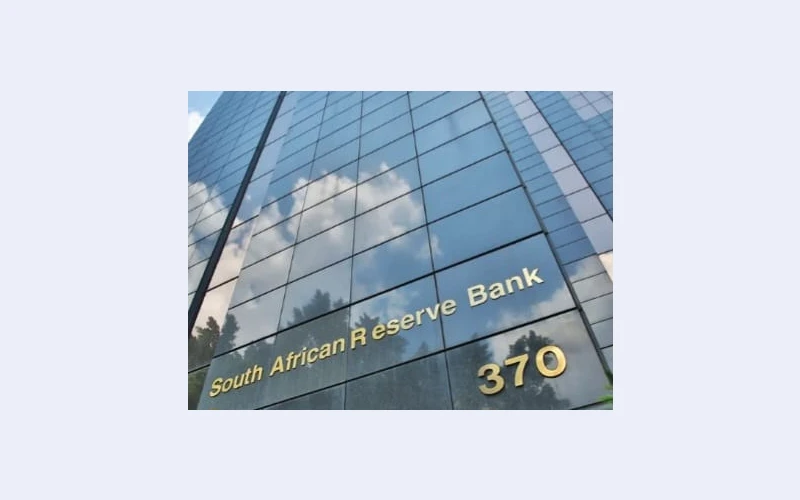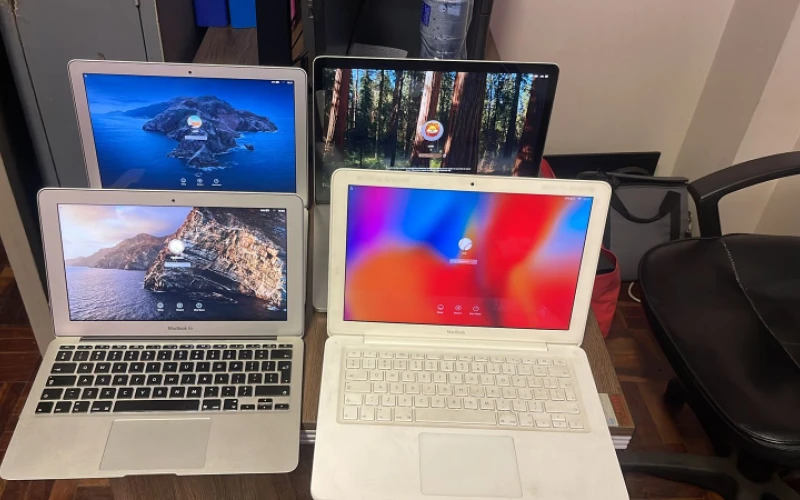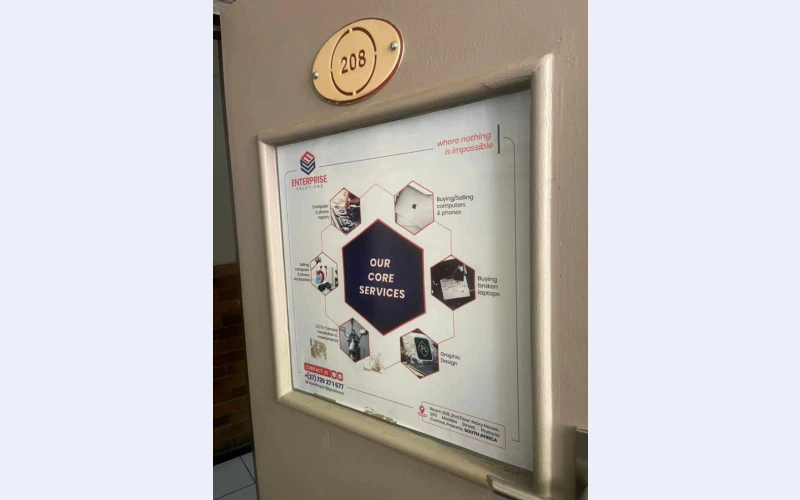Negotiable
Banking and the South African Reserve Bank's Big Move to Go Cashless
- Category: Services
- Sub Category: Insurance & Financial Services
- Location: Pretoria, Gauteng
- Ad Posted: 1 month ago
Descirption
South Africa, one of Africa’s most prominent economies, is undergoing a major transformation in its financial landscape. As part of its push for greater financial inclusion and to modernize the national payments system, the South African Reserve Bank (SARB) is taking bold steps to encourage a cashless society. Through strategic partnerships, technological innovation, and regulatory reforms, SARB aims to reduce reliance on physical currency and boost the adoption of digital payments. One of the most significant moves in this direction is SARB’s plan to acquire a 50% stake in BankservAfrica, a leading payment clearing house in the country.
SARB’s Role in the South African Banking Sector
The South African Reserve Bank plays a pivotal role in managing the country’s monetary system, overseeing a range of banking functions that influence both the domestic economy and the broader financial ecosystem. Some of SARB’s core responsibilities include managing the National Payment System (NPS), implementing monetary policy, regulating financial institutions, issuing banknotes and coins, and providing liquidity assistance.
As South Africa’s central bank, SARB also serves as the government's banker, managing national reserves and facilitating interbank payments. These responsibilities are critical in ensuring the stability and resilience of the financial sector in a dynamic and ever-changing economy.
The Move to a Cashless Society in South Africa
One of the most significant developments in the South African banking sector is SARB's push toward a cashless society. The country has a deeply entrenched culture of cash usage, with nine out of ten transactions still made using physical currency. Despite the growth of digital payment systems, cash remains king, especially in informal markets where small businesses and consumers prefer to deal in physical money.
This over-reliance on cash has been a barrier to greater financial inclusion and efficiency. Cash-based transactions are often slow, costly, and prone to fraud, while digital transactions offer greater security, convenience, and transparency. For this reason, SARB has identified moving toward a cashless society as a key part of its vision for modernizing South Africa’s payment infrastructure and increasing financial inclusion.
As part of this effort, SARB and BankservAfrica are collaborating to transform the national payment system. SARB's acquisition of a 50% stake in BankservAfrica signals a major step in the move toward a cashless economy. The goal is to modernize South Africa's financial system, increase digital transaction volumes, and ensure the system is more secure, inclusive, and efficient.
BankservAfrica and the Transition to Digital Payments
BankservAfrica has long been an integral player in South Africa’s financial ecosystem, providing clearing and settlement services for financial institutions across the country. As a trusted payments infrastructure provider, BankservAfrica plays a key role in facilitating interbank transactions, ensuring that funds can flow smoothly and securely between banks and their customers.
BankservAfrica’s initiative to promote digital payments has been exemplified by the introduction of PayShap, a real-time, low-value, interbank digital payment system launched in March 2023. PayShap enables consumers to make instant payments across different banks, making it easier to conduct everyday transactions without the need for cash.
Since its launch, PayShap has grown rapidly, processing over 74.2 million transactions worth a combined R46 billion. With more than 1 million transactions per day, PayShap is already a game-changer for the South African payments industry, offering a fast, low-cost alternative to traditional bank payments.
The recent partnership between BankservAfrica, the SARB, and commercial banks aims to expand the use of digital payment methods, with a particular focus on enhancing financial inclusion in underbanked and rural communities. This strategic collaboration seeks to modernize the country’s payment system, reduce the use of physical cash, and provide more accessible and convenient payment solutions for South African consumers.
The Role of SARB in Regulating and Promoting Digital Payments
SARB's regulatory role is critical in ensuring that digital payments are secure and effective. The central bank has implemented several initiatives to facilitate the growth of electronic payments, including its Digital Payments Roadmap. This roadmap outlines a strategy for increasing digital payments adoption and addressing some of the barriers to cashless transactions.
One of the main hurdles to going cashless is the lack of trust in digital financial systems. Many South Africans, particularly in rural areas, still prefer cash transactions because they are more familiar with the process and feel that digital systems are less secure. To overcome this, SARB is working to build consumer trust by educating the public on the safety and convenience of digital payments, as well as by improving the infrastructure necessary to support these systems.
Despite the challenges, SARB remains optimistic about the future of digital payments in South Africa. According to the bank’s forecasts, by 2025, more South Africans will have become accustomed to electronic payment methods, which will pave the way for further financial inclusion and economic growth.
Why Do Banks Want to Go Cashless?
The shift toward a cashless society offers numerous benefits to banks, ranging from cost savings to increased operational efficiency. One of the primary reasons why banks are eager to embrace digital payments is that they significantly reduce the operational costs associated with handling physical cash. Managing cash involves expenses related to transportation, security, and storage, while digital payments can be processed more quickly and at a lower cost.
Additionally, the digitalization of payments offers banks a wealth of data on customer spending habits and behaviors. This data can be used to create targeted financial products, offer personalized services, and improve customer experiences. For example, banks can analyze transaction data to offer tailored lending solutions or provide rewards and incentives for customers who use digital payment systems more frequently.
For commercial banks, embracing digital payments also opens up new revenue streams. With the rise of mobile banking, contactless payments, and online transactions, banks can capitalize on new technologies to offer more convenient services, expand their customer base, and increase their market share. Furthermore, as mobile payments become more widespread, banks can also target unbanked populations who have access to smartphones but may not have traditional bank accounts.
SARB’s push for a cashless economy is seen as a strategic move to enhance the overall efficiency and security of the financial system, while also improving the customer experience. By supporting the growth of digital payments, SARB and commercial banks are working together to build a more inclusive financial system that caters to the needs of modern consumers.
What is the Move to a Cashless Society?
The move toward a cashless society is a global phenomenon driven by technological advancements, changing consumer preferences, and the growing demand for greater efficiency in financial transactions. A cashless society is one in which physical money, such as coins and banknotes, is replaced by digital forms of payment, including credit and debit cards, mobile money, and online banking.
In South Africa, the push to go cashless is part of a broader strategy to improve financial inclusion, reduce crime, and make the payment system more efficient. Digital payments offer a range of advantages over cash, including faster transaction times, lower transaction costs, greater transparency, and enhanced security. For instance, mobile payments enable consumers to make instant transfers and purchases with just a few taps on their smartphones, which is much quicker and more convenient than using cash.
The move toward cashless transactions is also seen as a way to combat the informal economy, which remains a significant part of South Africa’s economic structure. By increasing the use of digital payments, SARB aims to bring more individuals and businesses into the formal economy, where transactions can be tracked, taxes can be collected more effectively, and financial inclusion can be expanded.
However, there are challenges to fully transitioning to a cashless society. A significant portion of South Africa's population, particularly in rural areas and among low-income groups, does not have access to digital payment systems or the internet. Additionally, cultural factors and a lack of trust in financial institutions can hinder the widespread adoption of cashless payments. To address these issues, SARB is working closely with banks, payment providers, and policymakers to create an inclusive digital payment ecosystem that caters to all South Africans, regardless of their income level or geographic location.
Who Owns the South African Reserve Bank?
The South African Reserve Bank (SARB) is owned by a combination of private and public stakeholders. Established in 1921, SARB is one of the oldest central banks in the world and operates independently from the South African government, which gives it the freedom to implement monetary policies without political interference.
The ownership of SARB is unique compared to other central banks, as it is listed on the Johannesburg Stock Exchange (JSE). Private shareholders hold the majority of the bank’s shares, and these shareholders elect the bank’s board of directors. The South African government, while not a direct shareholder in SARB, has significant influence over its policies through its role in appointing the Governor and setting the broader economic framework within which the bank operates.
Despite its private ownership, SARB operates with a public mandate. Its primary goal is to maintain price stability, promote sustainable economic growth, and safeguard the financial system. SARB’s independence is crucial for ensuring that it can make decisions based on long-term economic health rather than short-term political pressures.
In recent years, there have been calls for changes to the structure of SARB, with some advocating for full state ownership. However, SARB has continued to perform its duties as the central bank of South Africa with a focus on stability and economic growth. Its role in modernizing the country’s payment systems and moving toward a cashless society is part of this broader mandate to improve financial inclusion and create a more resilient economy.
Conclusion
The South African banking sector is on the cusp of a major transformation, driven by technological advancements, regulatory changes, and a concerted effort by the South African Reserve Bank to promote digital payments. Through initiatives like PayShap and partnerships with commercial banks, SARB is working to reduce the country’s reliance on cash, modernize the financial system, and expand access to secure and efficient payment methods.
The move to a cashless society is not without its challenges, including a lack of trust in digital systems, limited access to banking in rural areas, and resistance from certain sectors of society. However, with continued investment in digital infrastructure, consumer education, and regulatory support, South Africa is well on its way to building a more inclusive and secure financial ecosystem that benefits all South Africans. As this shift continues to unfold, the banking sector, led by the SARB, will play a crucial role in shaping the future of finance in South Africa and beyond.












-674ea78dcf5a8.webp)








